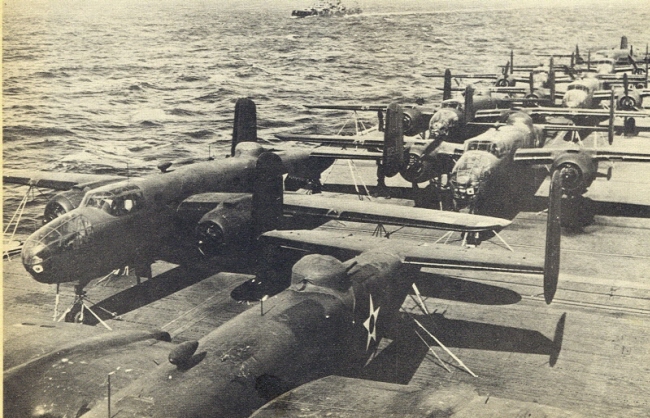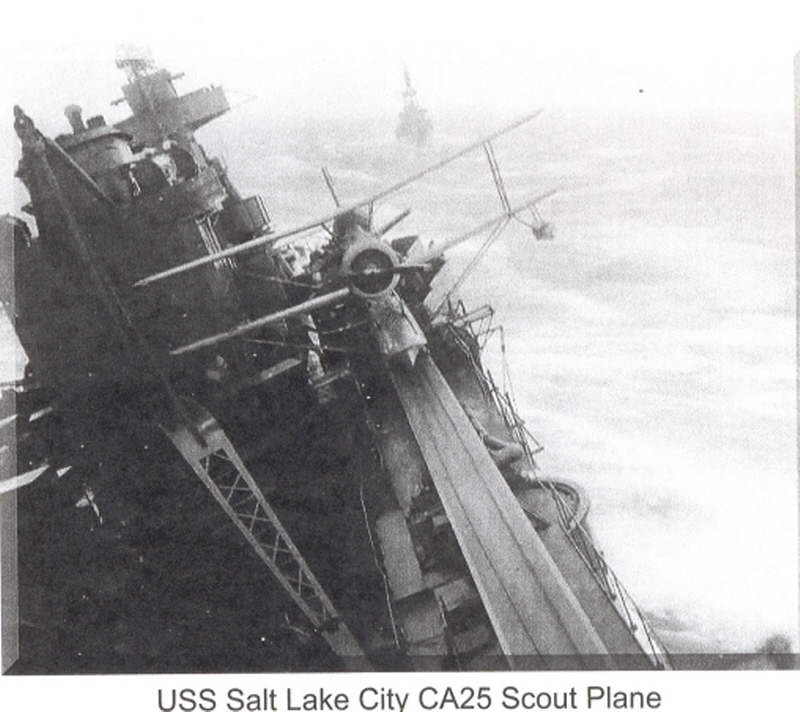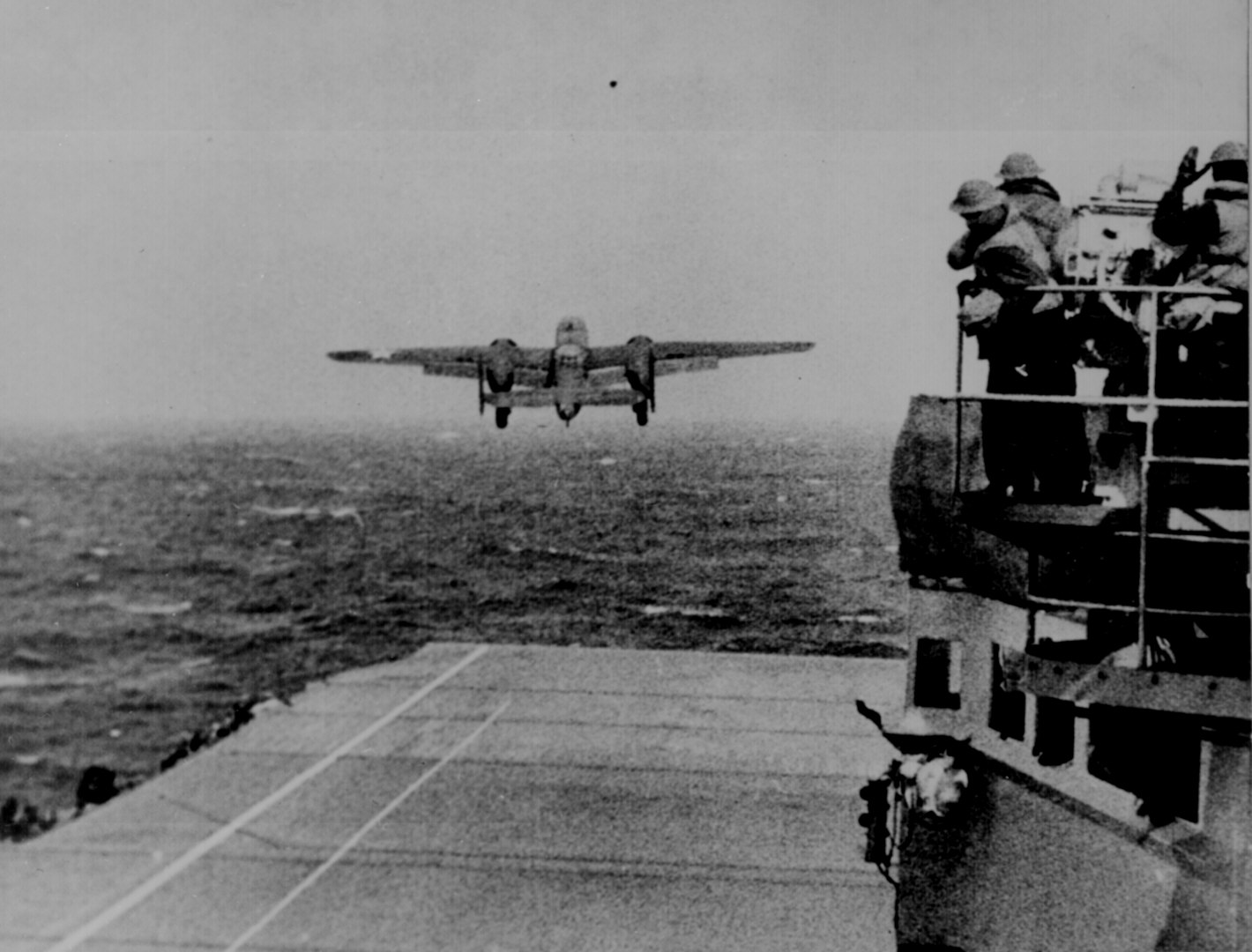
SHANGRI-LA
By Jake Jaekel
This story starts with the commissioning of the aircraft carrier USS Hornet about six weeks prior to the Japanese attack on Pearl Harbor December 7th, 1941.
Shortly after the attack President Roosevelt in desperate need for some good news that would also have great psychological effect on the Japanese leaders invincibility came up with the idea of bombing Tokyo.
The Navy and the Air Corps came up with the solution of flying B 25s, with a 2000-mile range, from the deck of an Aircraft Carrier. It was billed as just another Navy experiment and successfully tested by taking two B 25s off from the USS Hornet’s flight deck while maneuvering off the Virginia Capes in early February 1942.
Meanwhile Admiral Halsey’s Task Force continued to run up and down the Pacific holding the line by attacking Japanese Bases and inflicting as much damage as they could, then quickly disappearing in the vast Pacific Ocean before the Japanese could mount a large counterattack. They attacked the Marshall and Gilbert Islands February 1st, Wake Island February 24th, and Marcus Island 900 miles from Japan March 4th, 1942. A dive-bomber from the Enterprise was shot down but they could be seen waving after landing in the water. They were taken prisoner and survived the war in a Japanese Prison camp in Japan, one of them was a Pearl Harbor Survivor.
The USS Hornet arrived at a dock near the Alameda air station and April 1st, loaded sixteen B 25s onto her flight deck. The next morning in the heavy fog the eight ship Task Force slipped out under the Golden Gate to sea.

The morning of April 8th, the eight ship Enterprise Task Force under the command of Admiral Halsey left Pearl Harbor and headed northwest and the morning of April 13th the ships of the two Task Forces and two submarines merged under the Command of Admiral "Bull" Halsey.
Task Force 16 proceeded westward toward Japan cloaked in dismal weather and rough seas. However planes from the Enterprise and four cruisers managed to provide the eyes of the Task Force by patrolling and scouting on all but the worst days. In the North Pacific the swells get big and along with large white capped waves provide a rough ride for any ship. News cameraman on the Hornet took a movie of the Cruiser USS Salt Lake City Cruising off the port side diving into a large swell with water coming over the bow clear up to the bridge. It was calculated that the bow of the ship was 60 feet under the water.

On April 17th the two carriers and four cruisers refueled and that afternoon Admiral Halsey detached the destroyers and fleet tankers to make a final high-speed dash to the objective. We cruised at high speed the rest of the day and all night.
At daylight April 18th with all hands at battle stations, Pearl Harbor Survivor Ralph Horton a forward lookout on the Salt Lake City, spotted a Japanese fishing boat bearing 220 degree’s at 20,000 yards. The light cruiser Nashville was dispatched to sink the picket boat. During the operation Enterprise planes sank two more fishing boats.
It was believed one of the boats had sounded the alarm and the decision was made to launch the Doolittle Raiders even though we hadn’t reached the desired launch point. Accordingly the Hornet swung into the wind and at 0825 Lt. Col. Doolittle’s B 25 struggled off the flight deck and headed for Tokyo. All sixteen bombers had taken off and departed within an hour; then the Hornet brought up their own planes from the hangar deck and we headed back to join the Destroyers and Fleet Tankers.

Of the eighty Doolittle Raiders that took off from the Hornet that day in those sixteen B 25s three were killed during the raid. Eight became prisoners of war in Japan (Three executed by a firing squad and another died in captivity). Five were interned in Russia and thirteen others would die later in the war.
Of the six ships that made the last high-speed dash to launch the Doolittle Raiders, three were lost later and the other three suffered heavy damage fighting other battles during the war.
We were told not to discuss absolutely anything about the attack on Tokyo with anyone. When President Roosevelt was asked by the newsmen where the B 25s took off from he replied "They came from our new secret base at Shangri-La".